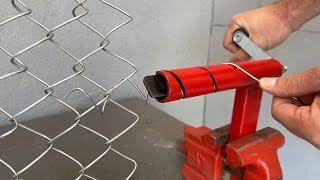
Building museum exhibits with open hardware: Raspberry Pi & Arduino
Michael Borthwick
https://linux.conf.au/schedule/30227/view_talk
When galleries, museums, libraries and archives create exhibitions they make choices between proprietary and open hardware solutions for video playback and interactive exhibit control. The wildly successful $25 Raspberry Pi single board computer with hardware accelerated playback of high-definition video represents a compelling alternative to proprietary media players in temporary and permanent exhibitions. It is low cost and low power, extensible and open and leverages the reliability of the Linux OS and open source video player applications. Having access to the source code allows museums to leverage the work of the 1000's of great minds who contribute to the development of the technology stack, to modify the code to incorporate new custom features, to contribute those changes back for the benefit of the global cultural heritage community and to obtain support from peers and others in the community with knowledge of the base OS and popular powerful open source languages such as Python. Not only is the Pi more open, but omxplayer's support for closed captions makes museum exhibits more accessible for Deaf and hearing impaired visitors while the ability to switch on-the-fly between subtltles in different languages makes these exhibits more inclusive by embracing the language needs of our multicultural population.
The vibrant Arduino eco-system allows the creation of unique open solutions by remixing hardware designs and prototypes from a vast community of hobbyist and commercial contributors upon which can be run realtime interactive applications that utilise powerful libraries for controlling audio-visual and other technologies.
https://linux.conf.au/schedule/30227/view_talk
When galleries, museums, libraries and archives create exhibitions they make choices between proprietary and open hardware solutions for video playback and interactive exhibit control. The wildly successful $25 Raspberry Pi single board computer with hardware accelerated playback of high-definition video represents a compelling alternative to proprietary media players in temporary and permanent exhibitions. It is low cost and low power, extensible and open and leverages the reliability of the Linux OS and open source video player applications. Having access to the source code allows museums to leverage the work of the 1000's of great minds who contribute to the development of the technology stack, to modify the code to incorporate new custom features, to contribute those changes back for the benefit of the global cultural heritage community and to obtain support from peers and others in the community with knowledge of the base OS and popular powerful open source languages such as Python. Not only is the Pi more open, but omxplayer's support for closed captions makes museum exhibits more accessible for Deaf and hearing impaired visitors while the ability to switch on-the-fly between subtltles in different languages makes these exhibits more inclusive by embracing the language needs of our multicultural population.
The vibrant Arduino eco-system allows the creation of unique open solutions by remixing hardware designs and prototypes from a vast community of hobbyist and commercial contributors upon which can be run realtime interactive applications that utilise powerful libraries for controlling audio-visual and other technologies.
Тэги:
#lca #lca2016 #MichaelBorthwickКомментарии:
Building museum exhibits with open hardware: Raspberry Pi & Arduino
Linux.conf.au 2016 -- Geelong, Australia
Süper Fikir | Çok Basit Tel Örme Aleti Nasıl Yapılır?
İbrahim Yıldız
ASMR Up-Close Personal Attention with Affirmations & Face Touching
Slight Sounds ASMR
23 апреля 2024 г.
Владимир Волосников
DJ Akademiks on how Kendrick BEAT Drake in Rap Beef Chess
FLAGRANT CLIPS
All New Traffic Cops S13E02
xxrachaelxx93xx
Cracking Four Whips from Asia
AdamCWM
Karimun junior
Rial Wiko


























